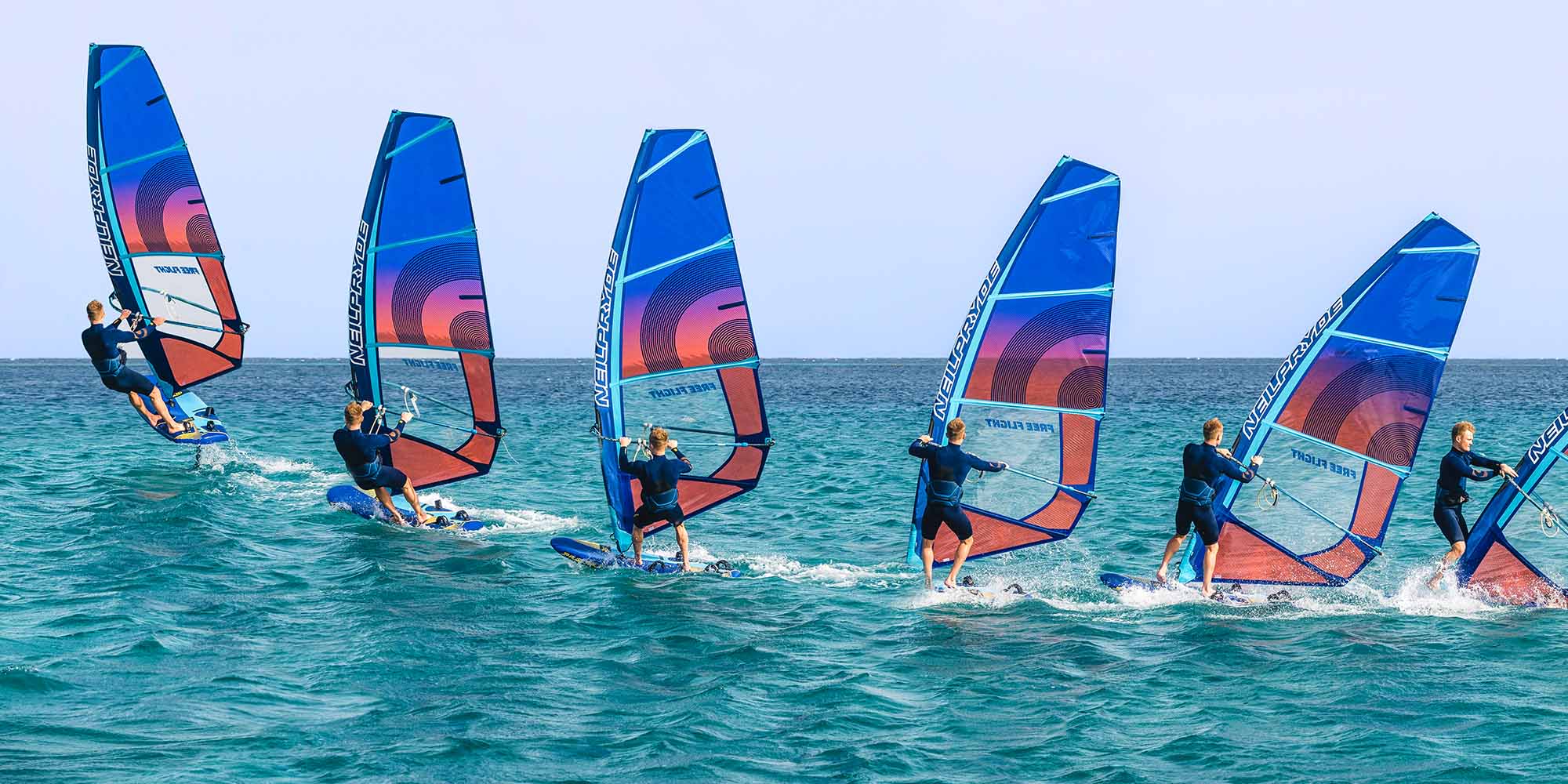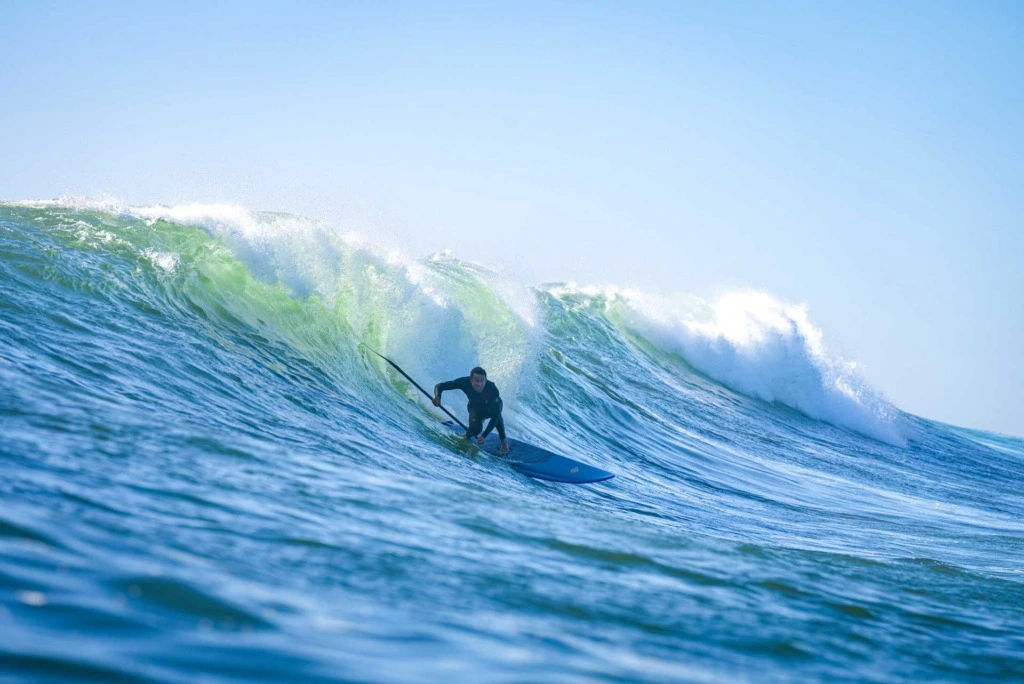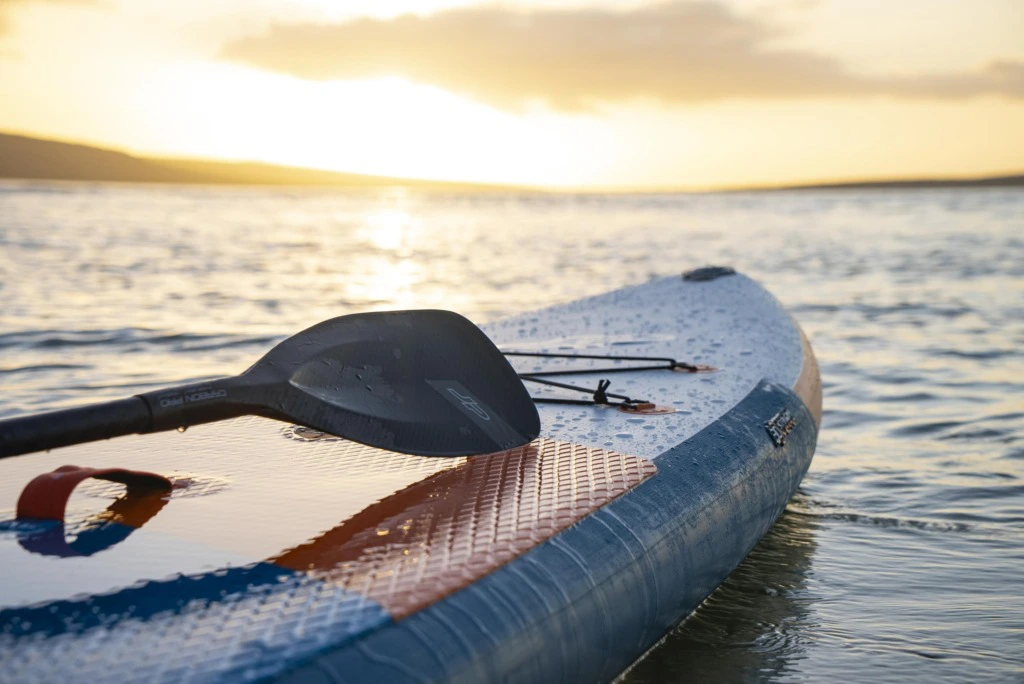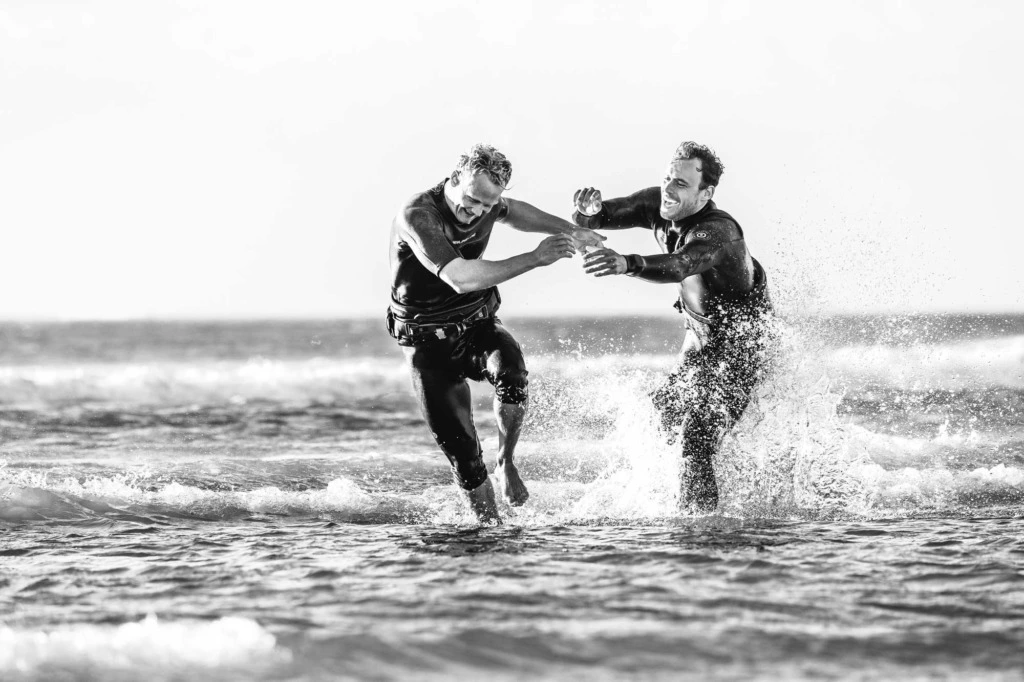BASIC TACK
BASIC TACK – Step 3: Get planing after the turn
Hang on to the sail, sheet-in and hook-in again. Move your feet back to the riding position to head off in the new direction.
BASIC TACK – Step 2: Change Sides
Position your front foot forward and stay fairly close to the mast base when ‘dancing’ to the other side of the sail. Place your front hand close to the mast on the boom to make changing the boom sides as easy as possible.
BASIC TACK – Step 1: Initiation
Reduce your speed significantly in order to gain enough time for the manoeuvre. Straighten your upper body and lean forward to lower the board down on the water. Keep turning upwing to further reduce speed.
Looking upwind over your front shoulder can help.

ADVANCED TACK
This is quite similar to the basic tack, except that you try to stay in the air as long as possible and fly as long as possible into the wind and touch down as short as possible for shifting only.
ADVANCED TACK – Step 1: Initiating
Start as you would do for a basic tack and carve upwind with dedication. Take the back foot out of the strap and place it in the middle of the board. At the same time maintain the pressure on the windward rail with the front foot to carve further into the eye of the wind. Keep the board flat when touching down. As with the basic tack, stay close to the mast base with the front foot and quickly switch to the other side of the sail.

ADVANCED TACK – Step 3: Get planing after the turn
Sheet-in actively. Pump if necessary – sail and foil. Hook-in again. Quickly move your feet back in the riding position to head off in the new direction.
ADVANCED TACK – Step 2: Change Sides
Grab the boom near the mast with your front hand for a quick change of sides. Change the grip more courageously and faster in order to instantly regain speed in the new direction.








